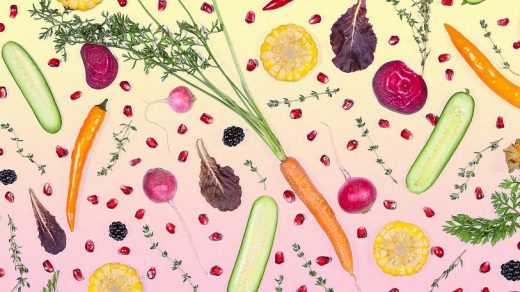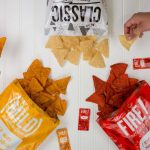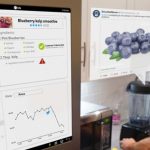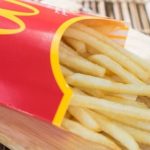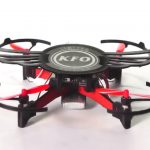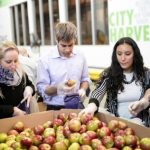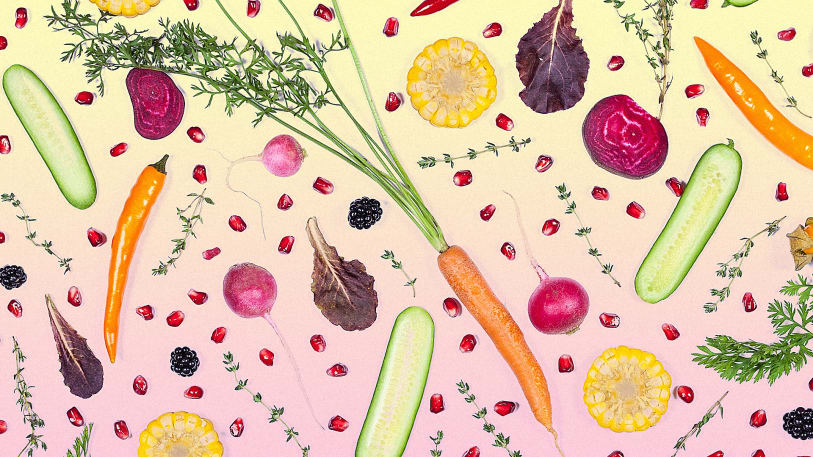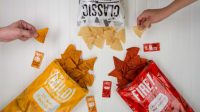Prescriptions For Fresh Produce, And Other World Changing Ideas In Food
Roughly 66 million people in the United States are either on food stamps or suffering from food insecurity, creating what amounts to a buy-by-volume style of unhealthy eating: in order to stay fed, people may not be able to choose the most healthful option. Not surprisingly, the U.S. also spends roughly $ 500 billion a year on medical treatments for diet-related diseases.
For Michel Nischan, the CEO of nonprofit Wholesome Wave, which runs the country’s largest prescription program for fruits and vegetables, and provides matching subsidies for fresh produce to those already receiving governmental assistance from the Supplemental Nutrition Assistance Program, the fix is simple: “That whole notion of investing in [better] food at the front end, instead of paying for treatment at the back end is a real economic opportunity,” he says. “If you start tapping into the half a trillion dollars a year that is being spent on expensive medicines and treatments… you could actually say there’s the potential that our country could eat its way out of the national debt.”
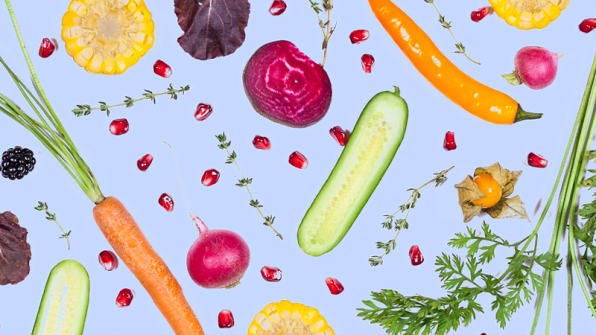
That’s because unhealthy eating has so many hidden costs. Sick people miss work, which affects both their own income and the productivity of our work force. They may also die early, leaving their family with more financial issues. Wholesome Wave, which started in 2007, wants to address all of this proactively by enabling doctors to write prescriptions for free produce for the people most at risk for diet-related diseases like hypertension, obesity and type-2 diabetes. And by setting up programs to ensure many more in impoverished circumstances never reach that point. The group’s devotion to such dramatic change has earned them the top spot among food projects in Fast Company’s World Changing Ideas Awards. (You can read more about the other finalists below).
The group offers services in 700 locations across 46 states. A recent prescription program, which launched in Los Angeles this summer, reaches 500 at-risk kids (average age: 8 years old) and their families, who are encouraged to make similar dietary changes to ensure proper meal planning and role model behavior. All told, that will affect how 2,400 people eat. As Fast Company has reported, Wholesome Wave also recently awarded over $ 200,000 in grants to other groups within their National Nutritional Incentive Network, who are sharing lessons and collecting data about how well similar approaches in other communities are working.
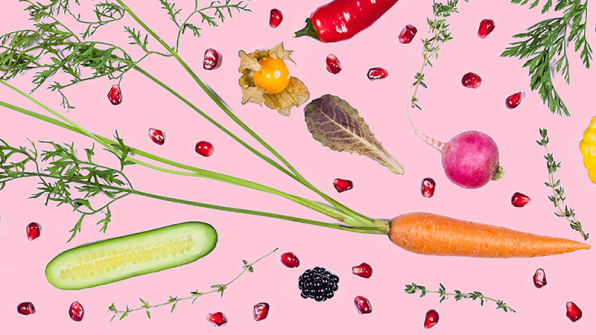
Nischan, a chef who has won James Beard awards for his own cookbook, TV show, and documentary work around healthier eating, began thinking more critically how food can prevent and control health issues about two decades ago, after two of his children were diagnosed with Type-1 diabetes. To help control his children’s symptoms, his family altered its own eating habits, which inspired a shift in the kind of food that Nischan wanted to be serving to other people too. Nischan had started out as a breakfast cook at a truck stop (it gave his rock band time to play at night), and worked his way up to become an industry force within the fine dining world. In 1997, he opened Heartbeat, a local, organic, and sustainable restaurant with no processed foods in New York’s first W Hotel. (He also managed the food and beverage programs and was executive chef at a half-dozen other locations.)
The impetus for Wholesome Wave came after joining a healthy eating think tank at Harvard Medical School, where he realized that another strain of diabetes (type-2) was completely preventable with the right dietary changes. Not only that, but if left unchecked, he realized, America’s unhealthy eating habits might eventually might hurt those with little or no choice in the matter. “[That] eventually led to the awareness that the majority of people with type-2 diabetes are at income levels that disallow them from being able to afford the types of food they need to consume to prevent the disease in the first place. That’s where I hit the wall,” he says. Nischan realized there was no real meal plan to help those with extremely low incomes to eat smartly. (The average SNAP allotment is just $ 29 per person each week.)
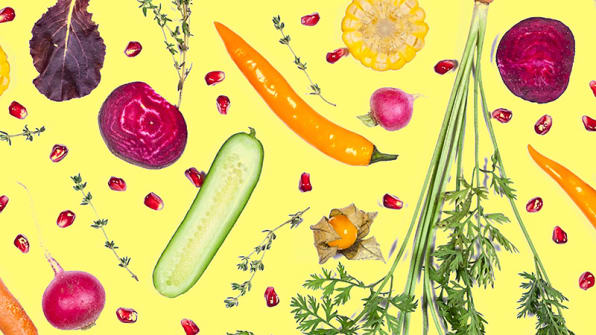
That inspired a career shift. “I could do Heartbeat because people could afford $ 40 for an entrée, but I was kind of patting myself on the back for nothing because I was reaching kind of the 1 to 5%,” he says. “It just wasn’t feeling right to me to be an upscale chef in a world where millions of people can’t afford a fucking tomato.” To counter that, Nischan launched Wholesome Wave, which included Paul Newman, a partner in another restaurant venture called The Dressing Room, and Betsy and Jesse Fink, the co-founder and first COO of Priceline, as original donors. The group’s work has since been backed by the W.K. Kellogg Foundation, Target, and the Sampson Foundation.
Losing weight isn’t the only signal of success, but early results show that nearly 50% of those who receive prescriptions end up reducing their BMI. More importantly, the level of interest in these programs proves that those most in need “value very similar things to a Wegmans or a Whole Foods consumer—quality of produce, selection, freshness, things like that,” Nischan says. That dispels equally unhealthy stereotypes that people eat poorly because they may lack of nutritional education or consumer preference. The biggest problem is the price.
Here’s more about the finalists in the food category:
50 in 5
by PepsiCo
Since 2010, PepsiCo has used smarter farm tech—a web-based platform hitched to precise field measuring equipment—to manage crop irrigation on a plant-by-plant basis, reducing potato growers’ water usage by 50% in some areas of the United Kingdom. It’s also doing something similar with greenhouse gases, calculating how different plant varieties, crop-storage techniques and running operations with renewable energy and fuel-efficient vehicles can lead to lower emissions. Eating chips may be a guilty pleasure, but not because of their environmental impact.
Certified Transitional
by Kashi
Currently, farmers equate going organic with short-term losses, part of why the sector makes up just 1% of the agricultural landscape. That’s because it takes three years to covert, during which time farmers are paying more to grow their crops in eco-friendly ways without the seal that would allow them charge more, too. Kashi’s “certified transitional” process, which debuted in May 2016, changes that by telegraphing which farms—those who upon inspection are hitting all the right benchmarks toward that changeover—might be worth a little more investment. Farms who are certified transitional can charge a little more for their harvests, while companies who use those ingredients get to affix a seal showing where their food was sourced. That allows Kashi (and soon other companies) share why their Dark Cocoa Karma Shredded Wheat Biscuits are so worth it.
World Food Programme Innovation Accelerator
by World Food Programme
The WFP Innovation Accelerator considers itself an “activist” Y-Combinator for curing global hunger. To do that, the Munich, Germany-based group seeds startups with cash (between $ 50,000 and $ 100,000), coaching (for three to six months), and most importantly access to the deployment network of its chief affiliate, the United Nations. Since launching in 2016, more than 20 concepts across 14 counties have been deployed largely through the UN’s existing field offices without any of the workforce shortages or cultural disconnects that groups parachuting into new places might face. It’s a ready-baked way to test and scale.
Autonomous organic farming
by DeepLook
Weed control accounts for a huge share of the chemicals used in farming. And weeding farms by hand is costly, difficult and increasingly unpredictable work because of federal crackdowns on undocumented workers. The good news: Engineers at from MIT and Stanford have combined forces to create droids that’ll do it for us. DeepLook’s autonomous fleet of robots use specialized visual interface to both identify what’s in each field and show the farmer exactly what the robo-field-hand is pulling. The bots use learning algorithms to get smarter over time and are already being tested at some fields in California.
South Side Soapbox
by Method Products and Gotham Greens
Method’s soap making plant has wind turbines and solar panels to produce its own clean electricity and keeps everything from manufacturing (including making soap bottles from post-consumer resin) to warehousing and distribution services in-house to reduce its carbon footprint. Fittingly, it’s crowned by a 75,000 square foot greenhouse by Gotham Greens, which runs on renewable energy and recycled irrigation water to produce fresh food year-round for the Chicago area. Another positive attribute: The facility has created 130 jobs for those around Chicago’s revitalizing Pullman neighborhood.
LED-lit greenhouses
by Colorado State University and Philips Lighting
For most brewers, the availability of hops is a real buzz kill. The flower, a key ingredient in most recipes, is freshly available only during the April harvest season, after which the only alternatives are wilting or dried alternatives that are far less flavorful. But Colorado State ad Philips Lighting are testing ways hops available locally and year round through vertical farming methods with artificial light. Early tests show that the some LED-based illumination formulas (there are variables like what light spectrum, intensity, position and exposure rate you use) can actually yield danker hops.
Sunqiao
by Sasaki
As Chinese major cities grow, they’re gobbling up arable land, while evermore gets destroyed by various forms of pollution. That means the country has more mouths to feed and less growing space to do it. Shanghai is breaking ground on a novel solution. Sunqiao will be a vertical farming district located between the city’s airport and downtown. The development, which will break ground in 2017, should grown vegetables like spinach, lettuce, kale, arugula, mustard greens, bok choi and watercress—all regional staples—in soaring glassy skyscrapers that double as tourist-worthy attractions. That should take the fresh food supply for the 24-million-person metropolis to literally a whole new level.
PopShrimp
by New Wave Foods
Shrimp is the most consumed seafood in the U.S. We eat about four pounds of it per person each year. But that appetite has led to some unsavory procurement practices, including fishermen netting massive piles of “by-catch” (other fish they’re not trying to catch) that die and go to waste. In the absence of cheap labor, some fishermen have even become trapped themselves, working as slaves aboard vessels in Southeast Asia. San Francisco-based New Wave Foods frees the supply chain of both issues with its PopShrimp, a popcorn shrimp recipe that mimics the flavor, texture, and protein of the real thing, but with no cholesterol–because it’s made entirely from algae. The company, which his done taste tests at pop up restaurants and Google’s cafeteria, is angling to hit grocery stores and restaurants in 2017.
Biovessel
by Bionicraft
This countertop decoration turns food waste into fresh soil with a sleek ergonomic design and it’s own, er, workforce—the polite way to say worms and microbes—to naturally compost your leftovers. Because it’s sealed, self-contained, and designed to work quickly there’s no stink or fruit flies. The design also has different ports, which can be used at different times, so today’s leftovers can be dropped in to digest on one side while last weeks are ready-to-use soil on the other.
Securing Water for Food: Technical Assistance Facility
by USAID and the Kaizen Company
Scientists and entrepreneurs trying to grow food with less water, create novel water-storage concepts, or do more with saline and soil tech, can now tap into a consortium of companies willing to offer funding, expertise, or even lab space. That’s the role of Securing Water for Food’s Technical Assistance Facility, which, instead of being a single institution, works more like a decentralized support network matching groups in more than 30 countries with the funding and nearby resources. The initiative is led by the Kaizen Company, a human an institutional capacity development firm, and funded by USAID. Within the last two years, the group has worked with over 80 concepts, helping save billions of gallons of water while producing hundreds of tons of food each year.
A healthier tomorrow—the Dig Inn expansion
by Dig Inn
The food at Dig Inn’s fast casual restaurants is driven by what’s locally available at nearby farms. While that means the menu has plenty of seasonal veggies, it also means that Dig Inn’s chefs actually have to cook raw ingredients, which isn’t always the case at other chains that source from centralized distributors or prep kitchens. Now the company, which has over a dozen locations in Boston and New York, is trying to grow in a way that supports both their knowledge of what can be harvested and how it can be best used. In 2017, they’re launching a training and teaching facility at their own farm in New York’s Hudson Valley.
Flow Hive
by Flow Hive
This invention takes the sting out of honey harvesting, transforming a once complicated process into an operation that’s easier on farmers and their bees. Rather than separating the bees from the hive, cracking it open, and running honeycomb though a centrifuge, Flow Hive users start their colonies on a frame that’s transparent on one side (so you know when to tap it) and has an internal mechanism that with the turn creates channels within the hive’s hexagonal, interlocking comb, so the spoils can drip freely without separating the bees from the hive. After a 2015 Indiegogo campaign raised $ 12 million, the company has sold more than 40,000 systems. The sweet part: As more hobbyists become hive masters, there should be a little more local food and a lot more pollinators for others growing other things, especially in urban areas.
Ripple
by Ripple
Most alternative milks promise to be lactose-free and have a low eco-footprint. What’s missing is comparable calcium or protein. But Ripple’s pea-based formula covers everything. It also uses far less water in production than traditional dairy or almond operations and provides the same amount of protein as 2% options, with more calcium, and half the sugar. That does a body (and the world) good.
Cricket Shelter
by Terreform ONE
Pound for pound, crickets offer twice the protein of beef, and require 300 times less water than typical livestock production. They can also be milled into a somewhat easier-to-stomach flour. To eat well, though, you’d still have to raise a whole lot of them in sanitary conditions. Cricket Shelter, a modular insect farm, by Terreform ONE, a nonprofit for philanthropic architecture and urban, ecological designs solves that issue by creating a cool, modular and hygienic space from readily available off-the-shelf parts. A prototype at the Brooklyn navy yards, which would be easy to throw up in disaster zones, is arch-shaped to double as an emergency shelter and can can yield 22,000 bugs, which would sleep separately in modular locked cubbies.
Beyond Burger
by Beyond Meat
Fittingly, Beyond Meat’s latest release, the plant-based Beyond Burger isn’t available beyond the usual faux-food aisle of the supermarket. When it debuted in the spring of 2016, Whole Foods agreed to put the pink ready-to-cook patty in its alongside its true beef competitors in the meat aisle. That’s a big win that might change how consumers classify such products. With patties that have 20 grams of protein and half that saturated fat per patty compared their cow-based counterparts, the company isn’t trying to change how Americans eat. It’s arguing that there’s a healthier more sustainable way to do so.
Everytable
by Everytable
If you can get the people who can afford it to pay a little more for their meals, and a lot more people will be able to eat elsewhere, too. That’s the model for Everytable, a Los Angeles-based chain that charges people eating at stores in more affluent areas higher prices than those who are dining in spots located in less well-off neighborhoods, many of which are food deserts, in order to make more nutritious meals available cheaply. To do so, it uses central kitchens and grab-and-go style packaging. The company has three spots around LA, with a fourth coming soon, proving the model works and is ready to expand to other metros.
Impossible Burger
by Impossible Foods
To win over eaters with the Impossible Burger—another eco-friendly, fake-meat marvel— Impossible Foods has focused on just one thing: taste. First, they developed a new way for manufacture meat’s not-so-secret key ingredient, heme, an iron-rich molecule that’s found in blood and makes meat pink. (They do that with a specialized yeast instead.) Second, they recruited all star chefs like David Chang, Traci Des Jardins, Chris Cosentino, and Tal Ronen to actually cook their plant-based burgers in top New York, San Francisco, and LA eateries. The goal is to create a burger so good even meat eaters can’t help but order it—and potentially want to cook it at home, if the company decides to go that route.
Hop Compost
by Hop Compost
Restaurant food waste ends up in the trash because current reclaiming processes are also pretty wasteful and disgusting. Industrial scale compost operations smell so bad they’re often located far from cities, costing food providers time, money, and lots of fuel-burn to ship there. The waste itself then rots slowly—it can take up to two years to biodegrade while offering up more harmful greenhouse gases. Canada-based Hop Compost uses modular, computerized containment vessels to do the same thing in less than two weeks through a carefully monitored and sealed process that yields no odor and especially nutrient rich soil. Without the big footprint and stink factor, the company can locate closer to its clients. Since February 2015, it has repurposed 3 million pounds of food waste at urban centers in Vancouver and Calgary while selling the resulting soil to Whole Foods garden centers.
(57)

